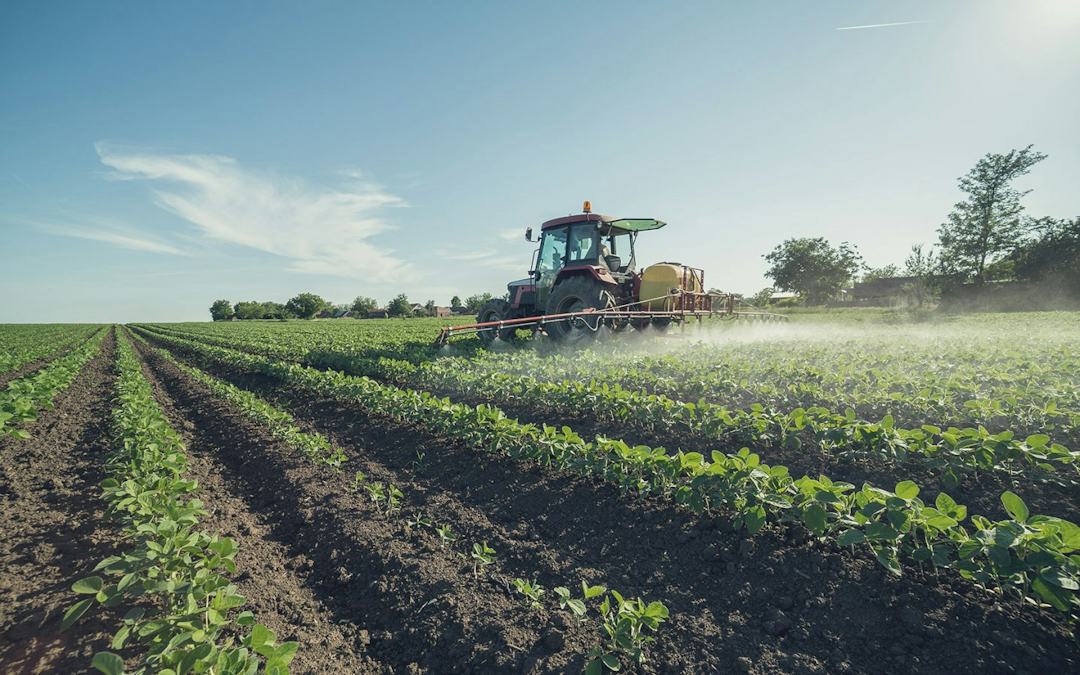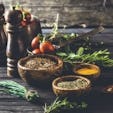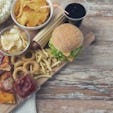Being able to attain healthy, nutritious, clean food should be your right as a human being. Yet, in our current capitalistic climate, it is just not that simple. There is big money in food, just as there is big money in Healthcare, and when the only thing we worry about is turning a profit, things go poorly, quickly. This goes for Conventional AND Alternative Medicine, as well as Organic vs. non organic.
As aware human beings, the only option we have left is to ask hard questions and to be extremely knowledgeable consumers.
This is why I love my patients. They ask the tough questions, and it makes us all better.
A recent Stanford study was published comparing conventional and Organic food. The research consistently shows that there is not much of a difference in the nutritional content between Organic and non organic food.
To me, this comes down to the fact that only 7% of the soil in the US is rated grade 1 prime, and if Organic or non organic fruits and vegetables are picked and then transported thousands of miles, we can expect them to lose their nutritional content.
But nutritional quality isn’t really why I buy Organic food anyways and I am not going to bang you over the head with stats about how the nutrient content of food has been depleted drastically since World War II. You see more about that here.
Studies have found that our current food supply is too weak to replete depleted cells in the human body. This makes a lot more sense to me. Think about it.
If someone has eaten one, maybe three servings of vegetables a day for 20+ years, and they needed 13+ to just meet the RDA (which gets tossed if you exercise heavily or are stressed), are they going to be able to replete that by eating 13+ now?
As my friend Teo annoyingly says all the time, “It’s simple math.” In this case, it is, and sometimes I don’t believe we can look backwards to fix new world problems.
AKA, we are not going to be to supply the entire world population with food by going back to using oxen and single plows. You aren’t going to walk into new age war-zone with a bow and arrow or a hatchet.
Thus, it looks like modern humans are going to need supplements.
Why Should I Buy Organic vs. No Organic Food?

It is the right thing to do….?
I believe that answer is Yes, but it is also convoluted, and sometimes we are really just picking between the far lesser of two evils (Organic farms can still use about 20 pesticides – here is an article from Scientific American).
Still, I am never going to buy vegetables that are pounded with glyphosate or eat Bt-corn, which is known to rip apart our intestinal lining (this is how it kills insects). I am never going to even pick up meat from animals that live in their own shit and suffer every day of their lives. NEVER.
“Conventional fruits and vegetables did have more pesticide residue, but the levels were almost always under the allowed safety limits, the scientists said. The Environmental Protection Agency sets the limits at levels that it says do not harm humans.”
-Kenneth Chang – NY times
That sentence right there. You think the EPA has our best interests in mind? They have the policy that chemicals have to be proven dangerous before they can be eliminated from use. Backwards. I sure as hell am not trusting any limits they put out. Why would you risk it? A couple bucks?”
Let’s get to the real issue – Money. Our per capita income spent on food has fallen from about 17.5% in the 1960s to 9.9% percent in 2013. AKA, we spend way less on food in the last five years now than we ever have before.
More disconcerting is that rich people spend 8% of their income (about $11,000 per year) on food, and those in the lowest economic bracket spend 36% ($3,600) of their HOUSEHOLD income on food.
That means that because of the current gap between the haves and have nots, those in lowest income bracket are going to have to eat sick, dead, processed foods. It is the only way they can get enough calories.
Maybe this is why one in two of ethnic minorities born after 2000 will become diabetic and may die before their parents.
Do you still trust the government to do the right thing and stop subsidizing agriculture that makes these garbage foods so disproportionately more inexpensive than real food?
When you keep the population malnourished, sick, and dependent on a constant stream of cheap corn and sugar, you make a lot of money. Money that comes in the form of medications and Cheez-its.
My lab group has been investigating the health impact of these horrifically depleted foods and the lack of access to real foods (these areas are called food deserts) for the past few decades in Hispanic youth.
Last year, my graduate advisor Dr. Jaimie Davis received a 5 million dollar NIH grant to build gardens and teach children where vegetables come from in high-need elementary schools.
I could hit you with stats all day about metabolic disease risk, increasing adiposity, and non-alcoholic fatty liver in kids, but that won’t really move you. But this might.
Imagine trying to live on $3,600 or $300 a month as a family of four. It is hard for me to even fathom how that could not only be possible, but the norm for low income families. I would be done in about three months.
The rest of the year I would be scavenging in the Texas sun for shrubs to chew on. It’s that or ramen. Which is a cute joke for college students, but is not a way to feed any human, especially a child. Thus, as much as we don’t want this to be about economics and poverty, it is.
There is a lot of money to be made on Organic foods and non organic foods, and with that need for profit in a capitalistic system enters the risk of corruption or at least the inclination to blur the lines.
Organic vs. Non Organic Food Today?

So what can we, as knowledgeable aware humans, do? And what can we do today? And no, it need not involve becoming a Hipster.
● Ask questions.
● Be aware and don’t expect any for profit or government agency to really have your best interests in their hearts (if they have one).
● Go to farmers markets.
● Meet them, talk to them, and don’t worry about the labels.
● Sign up for community supported agriculture.
● Build a garden, plant native plants, and feel the earth.
Here is the cool part. There is a meeting called the Copenhagen Consensus where the best of the best meet to discuss possible solutions to the biggest of the world’s problems. These solutions are then evaluated by the best economists.
In 2012, the conference ranked micronutrient interventions the highest priority, and estimated that every dollar spent on combating malnutrition would result in a 17 to 1 return on investment. Buy real food. Do your best!
It doesn’t matter if you are rich or poor, brown, black, blue, yellow, or pasty Norwegian white like me, we all improve mentally, physically, psychologically, and spiritually when we get the nutrients we need to not only survive, but thrive.
To make this not about money, if you buy any of the greens powders on my site over the next week any and all profits I make on these items will be donated to REALSchoolGardens.org, a non-profit organization that brings gardens and nutrition education to high-need youth.
My favorite greens powders are the Numedica Chocolate Power Greens and the Designs for Health PaleoGreens Lemon Lime. They are well sourced and doctor only products.
If you are debating how much to take I treat every scoop as one serving and every one of my clients must get to at least 13 servings of fruits (one to three) and vegetables (10+) a day.
Also, if you have been eating one serving of French fries and ketchup as your source of fruit and vegetable consumption for the last decade take your actual vegetable intake up slowly. Your GI tract won’t like me too much if you go from 5 grams of fiber to the ideal of 50+ grams of fiber in a day.
Thank you for your effort. Thank you for asking the hard questions. Thank you for waking up.
References
1. Wienecke E, Gruenwald J. Nutritional supplementation: is it necessary for everybody? Advances in therapy. Sep-Oct 2007;24(5):1126-1135.
2. Hunter D, Foster M, McArthur JO, Ojha R, Petocz P, Samman S. Evaluation of the micronutrient composition of plant foods produced by organic and conventional agricultural methods. Crit Rev Food Sci Nutr. Jul 2011;51(6):571-582.
3. Smith-Spangler C, Brandeau ML, Hunter GE, et al. Are organic foods safer or healthier than conventional alternatives?: a systematic review. Ann Intern Med. Sep 4 2012;157(5):348-366.
4. Forman J, Silverstein J, Committee on N, Council on Environmental H, American Academy of P. Organic foods: health and environmental advantages and disadvantages. Pediatrics. Nov 2012;130(5):e1406-1415.
5. Pelletier JE, Laska MN, Neumark-Sztainer D, Story M. Positive attitudes toward organic, local, and sustainable foods are associated with higher dietary quality among young adults. Journal of the Academy of Nutrition and Dietetics. Jan 2013;113(1):127-132.
6. Smith-Spangler C, Brandeau ML, Olkin I, Bravata DM. Are organic foods safer or healthier? Ann Intern Med. Feb 19 2013;158(4):297-300.
7. Gregg EW, Zhuo X, Cheng YJ, Albright AL, Narayan KM, Thompson TJ. Trends in lifetime risk and years of life lost due to diabetes in the USA, 1985-2011: a modelling study. The lancet. Diabetes & endocrinology. Nov 2014;2(11):867-874.
8. Chang, Kenneth. “Stanford Scientists Cast Doubt on Advantages of Organic Meat and Produce.” The New York Times. The New York Times, 03 Sept. 2012. Web. 30 Apr. 2016.
9. “Organic Food vs. Conventional Food.” Well Organic Food vs Conventional Food Comments. N.p., n.d. Web. 30 Apr. 2016.
10. “Your Grandparents Spent More Of Their Money On Food Than You Do.” NPR. NPR, n.d. Web. 30 Apr. 2016.
11. Wilcox, Christie. “Mythbusting 101: Organic Farming Conventional Agriculture.” Scientific American Blog Network. N.p., 18 July 2011. Web. 30 Apr. 2016.

)





